“War is largely a matter of confidence. If the troops have confidence in their mates, their weapons, their leadership and sufficient confidence in their numbers – in that they’ve got a fair chance and are not hopelessly outnumbered – they’ll fight well. When that confidence goes, then something snaps and the force can be dissipated.” Their new CO, Lt Colonel Ralph Honner, arrived from Australia on July 16, the day before his 38th birthday. To the teenage Diggers of the 39th, Ralph Honner, seemed like their grandfather. But his appointment was an inspired move. Honner was one of our finest tactical commanders, having proved his brilliance in the Middle East and Crete.
While the Japanese regrouped at Kokoda, Honner set his defences at Isurava and, equally importantly, set about instilling his young troops with confidence.
“Isurava provided as good a delaying position as could be found on the main Track. To the front and to the rear, tributary creeks flowed eastwards, down into the Eora Valley, providing narrow obstacles with some view over them. The creeks, which became known simply as ‘front creek’ and ‘rear creek’, were bordered by a belt of thick scrub, but between them were cleared spaces either side of the Track.In a flat clearing on the right was Isurava village, commanding a track dropping steeply down to Asigari in the Eora Valley. Above the clearing of long grass on the left was timber thickening into almost impenetrable jungle beyond.Forward of front creek, to the left of the northward Track to Deniki, was an overgrown garden through which a path from the main Track ran westward toward the Naro Ridge.” (Ralph Honner)
Honner’s orders were simple: hold Isurava until you are relieved. He knew the AIF forces, which had been rushed back from the Middle East, were on their way to reinforce him. He just had no idea when they would arrive. The young Diggers of the 39th, like Private ‘Spud’ Whelan, knew what was expected of them:
“We got a message from Port Moresby that the 2/14th were on the way and we had to stay there and fight till death. That was horrifying. I thought, ‘Well, I won’t see my family again, I won’t see Australia again.’ But I was prepared, like the rest of us, to stay there and fight to the finish.”
The 39th responded to Honner’s leadership and, when the inevitable attacks came, they acquitted themselves magnificently. The onslaught began on August 26, first with Japanese mountain guns raining down on the Australians’ position, then with relentless human wave attacks up the steep gullies. The Australians hurled them back, with grenades, rifles and machine guns and then with bayonets in ferocious hand-to-hand fighting.
